Discover 20 hidden attractions, cool sights, and unusual things to do in Tallahassee (United States). Don't miss out on these must-see attractions: Florida State Capitol, Lake Ella, and Union Bank. Also, be sure to include Doak Campbell Stadium in your itinerary.
Below, you can find the list of the most amazing places you should visit in Tallahassee (Florida).
Table of Contents
Florida State Capitol
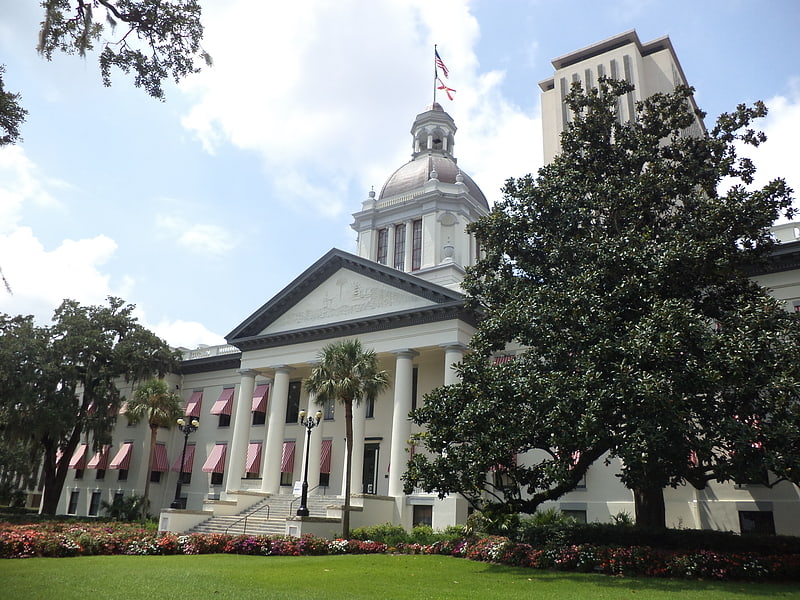
Landmark buildings and a government museum. The Florida State Capitol in Tallahassee, Florida, is an architecturally and historically significant building listed on the National Register of Historic Places. The Capitol is at the intersection of Apalachee Parkway and South Monroe Street in downtown Tallahassee, Florida.
The Historic Capitol, sometimes called "The Old Capitol," built in 1845, was threatened with demolition in the late 1970s when the new capitol building was built. Having been restored to its 1902-version in 1982, the Historic Capitol is directly behind the new Capitol building. Its restored space includes the Governor's Suite, Supreme Court, House of Representatives and Senate chambers, rotunda, and halls. Its adapted space contains a museum exhibiting the state's political history, the Florida Historic Capitol Museum, which is managed by the Florida Legislature. On April 18, 2012, the AIA's Florida Chapter placed the Historic Capitol Building on its list of Florida Architecture: 100 Years. 100 Places.
The New Tower houses executive and legislative offices and the chambers of the Florida Legislature.
The Florida Department of Management Services maintains the Capitol Complex, which is open to the public Monday through Friday, 8 a.m. to 5 p.m..[1]
Address: 400 S Monroe St, 32399-6536 Tallahassee
Lake Ella
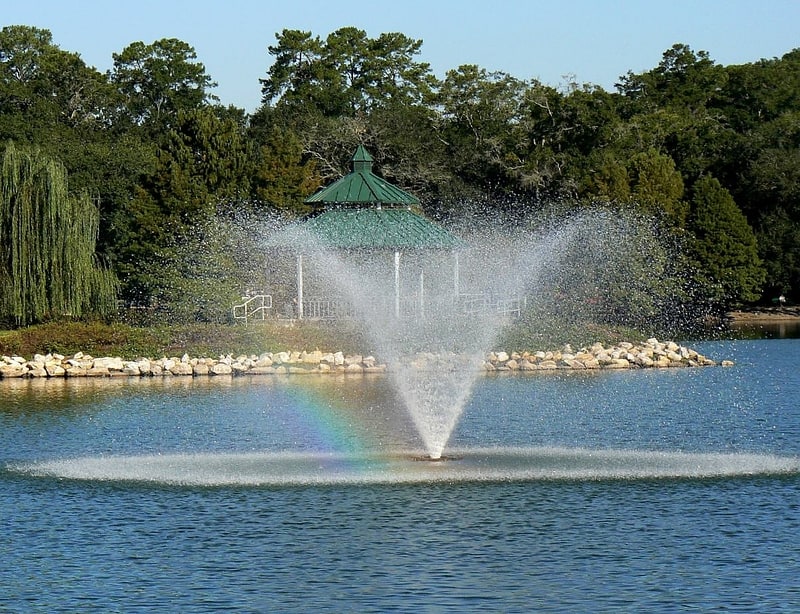
Lake in Florida. Lake Ella is a lake in central Tallahassee, Florida on US 27 just south of Tharpe Street, and just north of Downtown. Lake Ella has an area of 12 acres. Once used for cattle, it now has three fountains and is used for recreation, flood protection, and stormwater pollution control.[2]
Address: N Monroe (Midtown), 32399 Tallahassee
Union Bank

Museum in Tallahassee, Florida. The Union Bank of Tallahassee, Florida was established around 1830 and the bank building constructed for it in 1841. It is Florida's oldest surviving bank building. It is located at Apalachee Parkway and Calhoun Street and is now a museum and archive and research center for African American history. On February 24, 1971, it was added to the U.S. National Register of Historic Places.[3]
Address: 219 Apalachee Parkway, Tallahassee (Capital Cascade)
Doak Campbell Stadium

Stadium in Tallahassee, Florida. Doak S. Campbell Stadium, popularly known as "Doak", is a football stadium on the campus of Florida State University in Tallahassee, Florida. It is the home field of the Florida State Seminoles football team of the Atlantic Coast Conference.
Opened in 1950, it was originally named Doak Campbell Stadium in honor of Doak S. Campbell, the university's first president. On November 20, 2004, the Florida Legislature added longtime head football coach Bobby Bowden to the stadium name to become Bobby Bowden Field at Doak Campbell Stadium. A petition in June 2020 sought to remove Campbell's name, as he resisted racial integration while serving as President of Florida State University. FSU President John E. Thrasher asked Athletics Director David Coburn "to immediately review this issue and make recommendations to me." As of January 2021 no recommendations have been made.
The stadium is part of the University Center complex, a mixed-use facility encompassing university office space, university classrooms, the university's Visitor's Center, souvenir store, The University Center Club, and skyboxes and press boxes for use during football games.
With a stadium capacity of 79,560, it is the largest continuous brick structure in the United States, the 49th-largest stadium in the world, the second-largest stadium in the Atlantic Coast Conference, and the 18th largest stadium in the NCAA.[4]
Address: 403 Stadium Dr, 32304-4247 Tallahassee
Lake Jackson Mounds Archaeological State Park
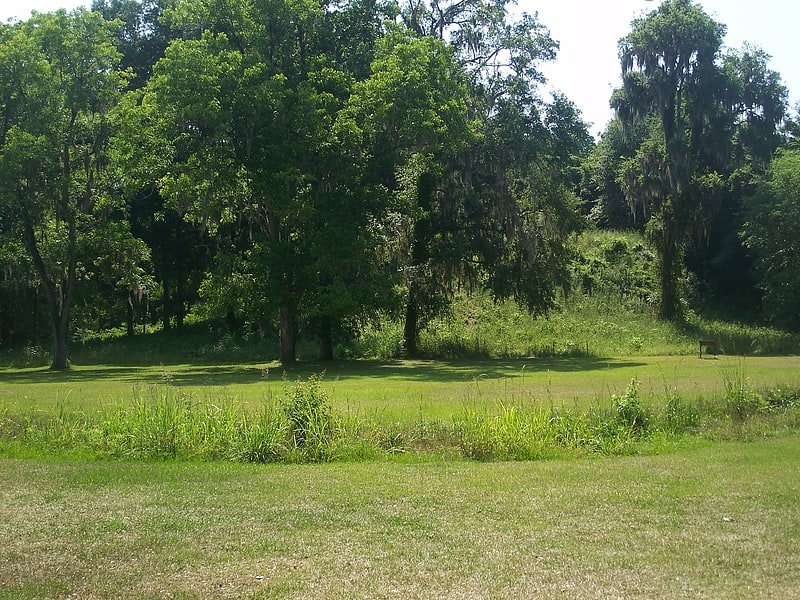
Park in Leon County, Florida. Lake Jackson Mounds Archaeological State Park is one of the most important archaeological sites in Florida, the capital of chiefdom and ceremonial center of the Fort Walton Culture inhabited from 1050–1500. The complex originally included seven earthwork mounds, a public plaza and numerous individual village residences.
One of several major mound sites in the Florida Panhandle, the park is located in northern Tallahassee, on the south shore of Lake Jackson. The complex has been managed as a Florida State Park since 1966. On May 6, 1971, the site was listed on the U.S. National Register of Historic Places as reference number 71000241.[5]
Address: 3600 Indian Mound Rd, 32303-2300 Tallahassee
Leon Sinks Geological Area
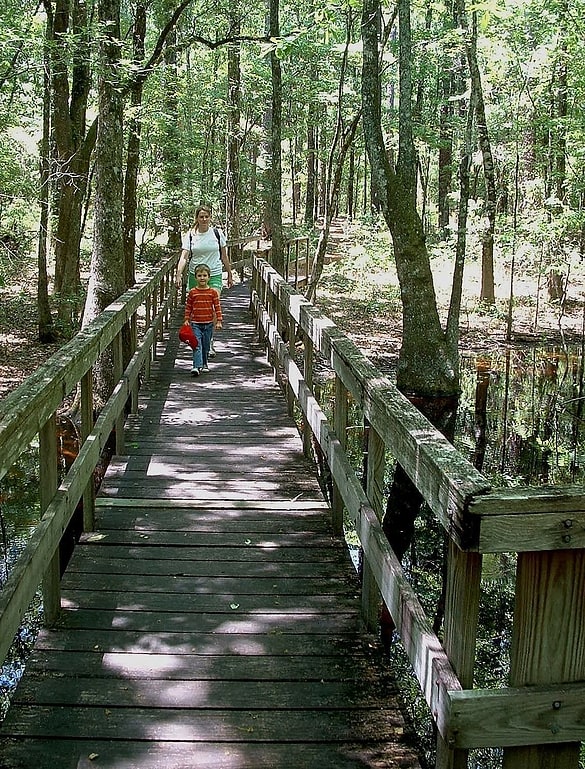
Park in Leon County, Florida. The Leon Sinks Geological Area is located on the Woodville Karst Plain in southern and southwestern Leon County, Florida, United States. It is a mature karstic area on the Upper Floridan Aquifer. It is one of the most extensive underwater cave systems in the world and connects to Wakulla Springs.
This hydrological system is extremely vulnerable to pollution because of the very high permeability of the carbonate aquifer. Extensive mapping and exploration of these caves has been done by the Woodville Karst Plain Project to understand the complex dynamics of the area and to understand the proper ecological approach to keeping this system clean.
The Leon Sinks are full of life, including the freshwater eel and rare crustaceans, including the Woodville Karst Plain crayfish and the swimming Florida cave isopod Remasellus parvus, that only exist in the Woodville Karst Plain.[6]
Address: Apalachicola National Forest, 32305 Tallahassee
Tallahassee Museum
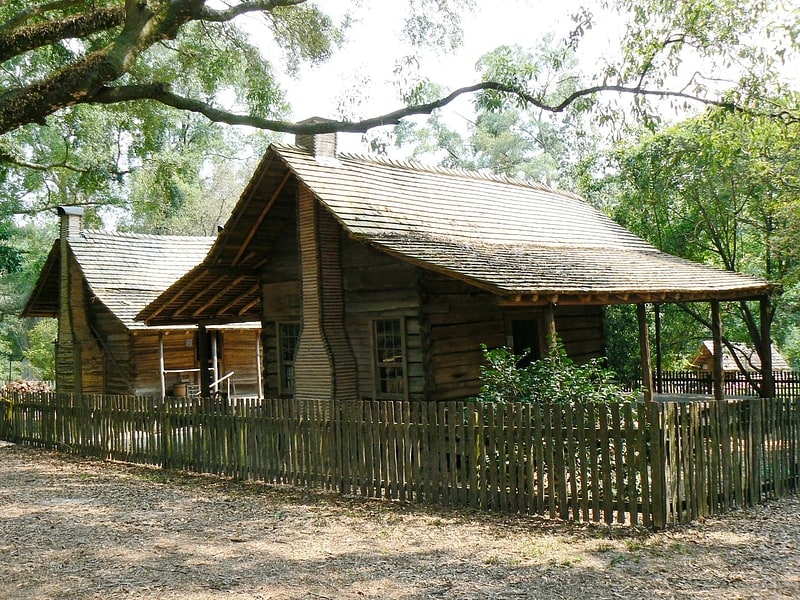
Museum in Tallahassee, Florida. The Tallahassee Museum is a privately funded, non-profit corporation in Tallahassee, Florida.
The stated purpose of the Tallahassee Museum is "to educate the residents of and visitors to the Big Bend area about the region's natural and cultural history, from the nineteenth century until the present." "Big Bend" refers to that portion of Florida where the Florida panhandle meets the peninsular portion of the state. Tallahassee, Florida's capital city, is centrally located in that region.[7]
Address: 3945 Museum Dr, 32310-6325 Tallahassee (Lake Bradford)
Museum of Florida History
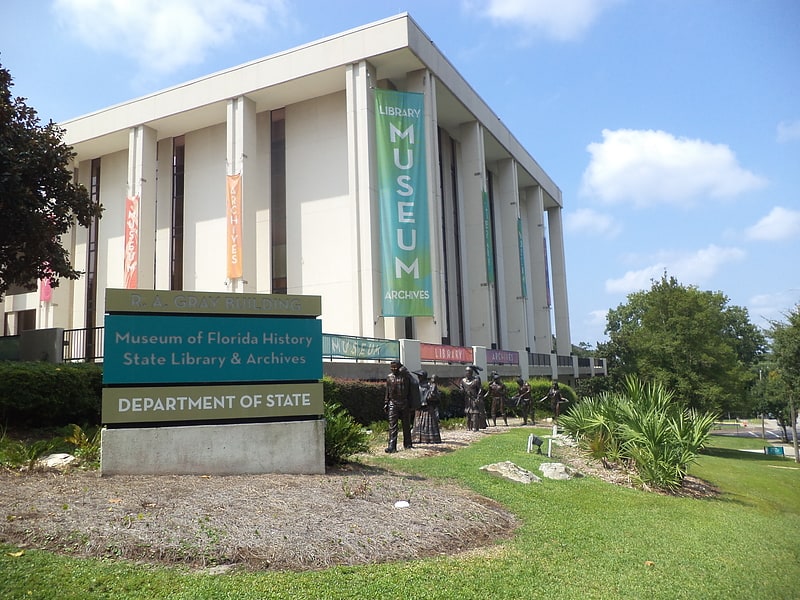
Museum in Tallahassee, Florida. The Museum of Florida History is the U.S. state of Florida's history museum, housing exhibits and artifacts covering its history and prehistory. It is located in the state capital, Tallahassee, Florida, at the R. A. Gray Building, 500 South Bronough Street, named for Robert Andrew Gray.
The museum features a gallery with exhibits that change every few months. Current displays include Beaches, Creatures, and Cowboys: Florida Movie Posters and The Florida Highwaymen Paintings.
Opened in 1977, the Museum of Florida History collects, preserves, exhibits, and interprets evidence of past and present cultures in Florida, and promotes knowledge and appreciation of this heritage.
As the state history museum, it focuses on artifacts and eras unique to Florida's development and on roles that Floridians have played in national and global events.
Through exhibits, educational programs, research, and collections, the Museum reflects the ways that people have shaped and reacted to their cultural and natural environments.
The Museum of Florida History is administered by the Florida Division of Cultural Affairs, a division of the Florida Department of State.[8]
Address: 500 S Bronough St, 32399-6504 Tallahassee
Goodwood Museum and Gardens
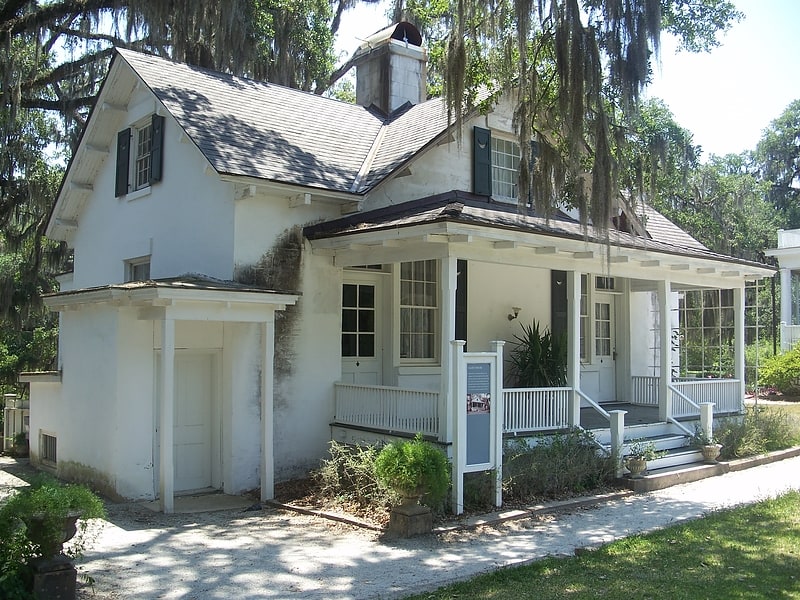
In 1824, in appreciation of the enormous service rendered to this country by the Marquis de Lafayette during the Revolutionary War, Congress voted to grant him a full township in the Florida Territory. This tract was called the Lafayette Land Grant and encompassed over 23,000 acres. While the Marquis never came to visit his property, he designated an agent to sell parcels of it on his behalf. The 2,400 acres upon which Goodwood Plantation was sited was purchased by Hardy Croom from the Lafayette Grant in 1834.
Goodwood Plantation (also known as Old Croom Mansion) was a medium-sized cotton plantation of about 1,675 acres (7 km2) in central Leon County, Florida, established by Hardy Bryan Croom. It is located at 1600 Miccosukee Road. The plantation was added to the U.S. National Register of Historic Places on June 30, 1972.[9]
Address: 1600 Miccosukee Rd, 32308-5166 Tallahassee
Florida State University College of Fine Arts
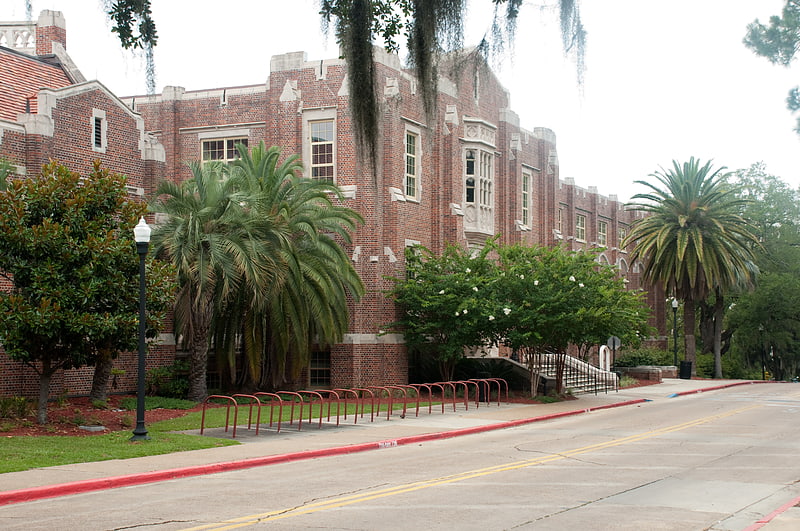
University in Tallahassee, Florida. The Florida State University College of Fine Arts, located in Tallahassee, Florida, is one of sixteen colleges comprising the Florida State University.[10]
Florida Governor's Mansion
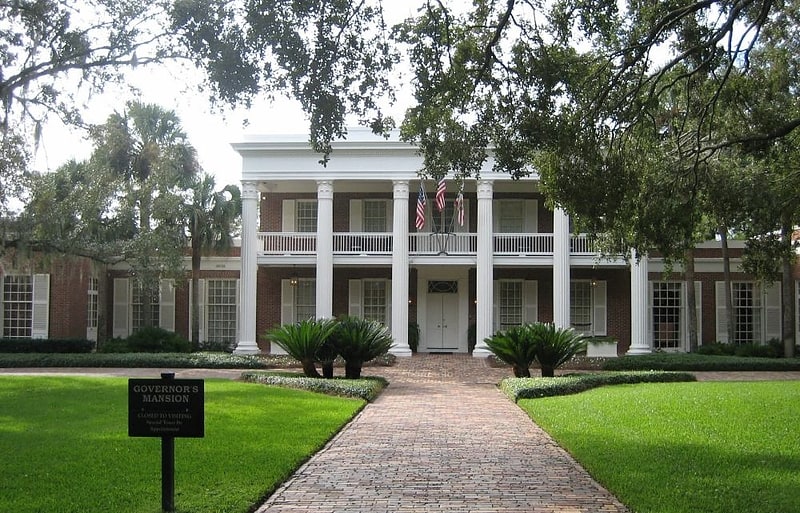
Government office in Tallahassee, Florida. The Florida Governor's Mansion is a historic U.S. residence in Tallahassee, Florida and the official residence of the governor of Florida. On July 20, 2006, it was added to the U.S. National Register of Historic Places.[11]
Address: 700 N Adams St, 32303-6131 Tallahassee
Co-Cathedral of Saint Thomas More
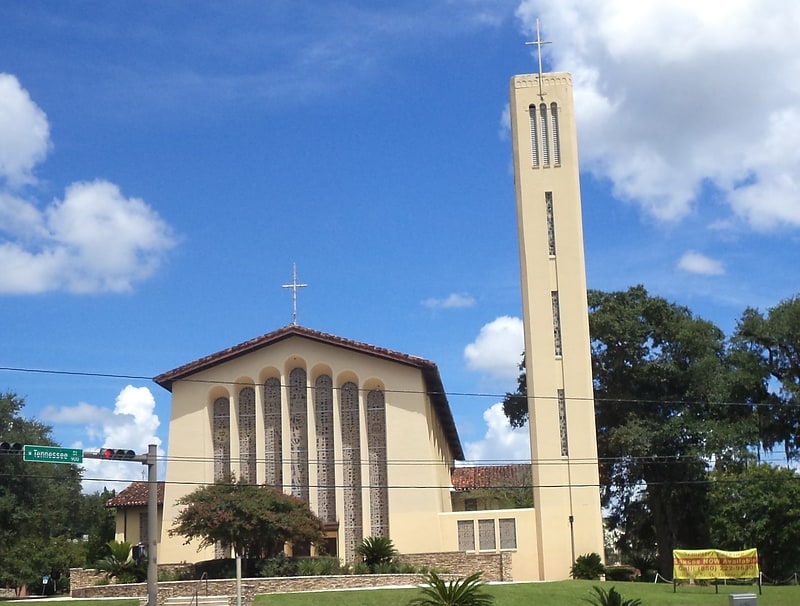
Cathedral in Tallahassee, Florida. The Co-Cathedral of St. Thomas More is a Catholic cathedral located in Tallahassee, Florida, United States. Along with the Cathedral of the Sacred Heart in Pensacola it is the seat of the Diocese of Pensacola-Tallahassee. St. Thomas More also provides the Catholic Campus Ministry at Florida State University.
The Altar Relics of the Co-Cathedral are of Saint Felix and Saint Felicity.[12]
Address: 900 W Tennessee St, 32304-7717 Tallahassee
Tallahassee Automobile Museum
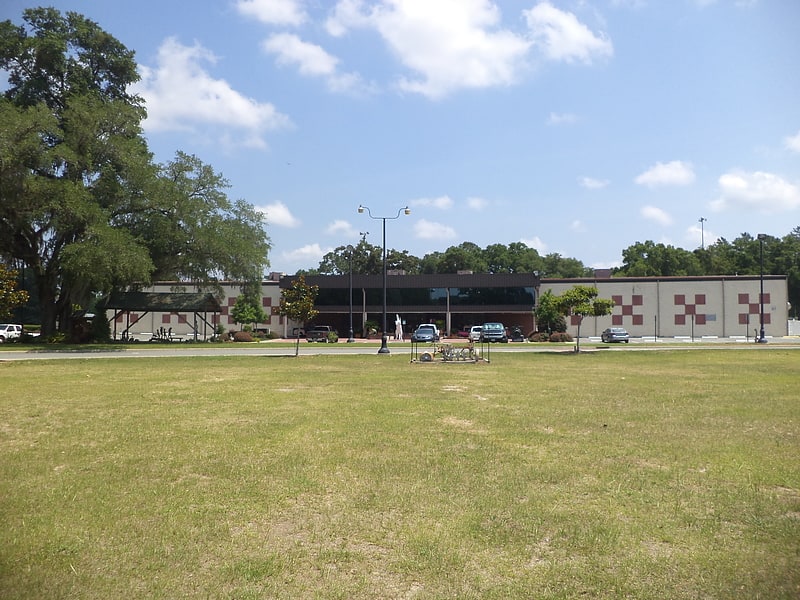
Museum in Leon County, Florida. The Tallahassee Automobile Museum, also known as the Tallahassee Automobile and Collectibles Museum, is an automobile museum in Tallahassee, Leon County, Florida. The museum is owned by Tallahassee-based businessman DeVoe L. Moore, and primarily showcases items of Americana from Moore's personal collection.
The museum's collection includes over 160 automobiles, Steinway grand pianos, die-cast toy cars, pedal cars, antique boating items, golf memorabilia, Hit and Miss motors, brass cash registers, clocks, bicycles, boats, sports memorabilia, motorcycles, can openers, spark plugs, artifacts and memorabilia. The collection includes three Batmobiles, an 1894 Duryea, a 1931 Duesenberg Model J Double Cowl Phaeton Convertible, 1911 Ford Model T Torpedo Run About, 1955 Kayser Darrin Roadster, a Delorean and a 1948 Tucker.
The site is also known for its place, as during the 2016 presidential election, US president Donald Trump held a campaign rally on October 25, 2016 in the water buffalo pasture next door in which 20,000 people attended.[13]
Address: 6800 Mahan Dr, 32308-1402 Tallahassee
John Gilmore Riley House
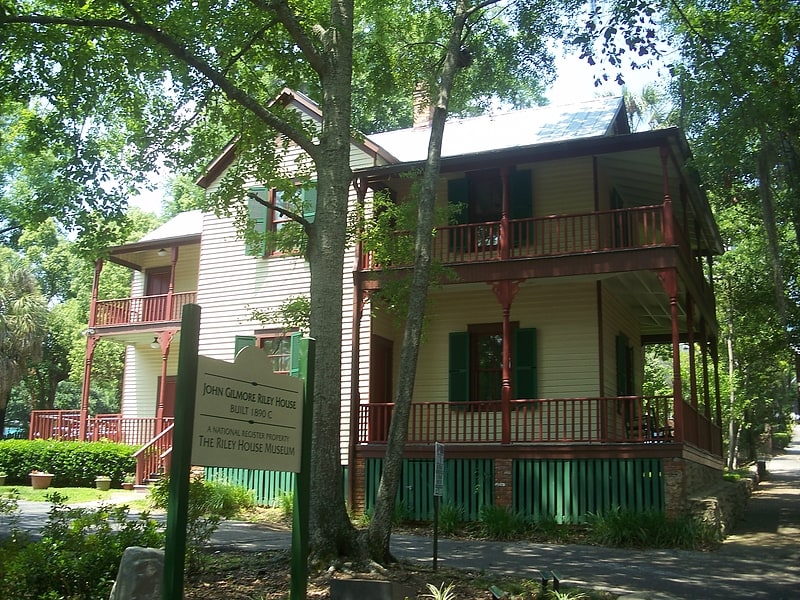
The John Gilmore Riley House is a historic home in Tallahassee, Florida. It is located at 419 East Jefferson Street. On August 1, 1978, it was added to the U.S. National Register of Historic Places. It is now known as the John G. Riley Center/Museum of African American History and Culture.
John G. Riley was a prominent member of the African-American community in Tallahassee. He was born a slave in 1857 and died a millionaire in 1954. Riley was the principal of the Lincoln Academy from 1892 until 1926. This school was later named Lincoln High School. The house, a vernacular wood-framed home, was constructed in 1895 and remained in the family until 1970.
Constructed in 1890, the Riley House is the last physical evidence of a thriving middle-class African-American community that existed in downtown Tallahassee at the turn of the 20th century. More than a historical landmark, the house is a noble witness to progress and the ability of its owner to succeed despite the odds. Unlike many other historic facilities in Tallahassee, the Riley House has humble beginnings. There was no dramatic transfer by will; neither did it come with a trust account or other means to help sustain operations or address perpetual needs of maintenance and security.
The original owner, John Gilmore Riley, was born into slavery in 1857. A largely self-taught person, he was chosen on December 1, 1881, to teach at the Lincoln Academy in Tallahassee, and on September 10, 1892, he was selected principal of the school and served until retirement in 1926. Lincoln Academy was one of three freedmen schools in Florida to provide secondary instruction for former slaves and their descendants.
The Riley House was abandoned in 1973. It was restored in 1981 and purchased by the John G. Riley Foundation, Inc. and established as a museum in December 1995. It features an animatronic, speaking figure of Riley, donated by Disney.[14]
Address: 419 E Jefferson St Fl 32301, 32301-1817 Tallahassee (Capital Cascade)
Gallie's Hall and Buildings
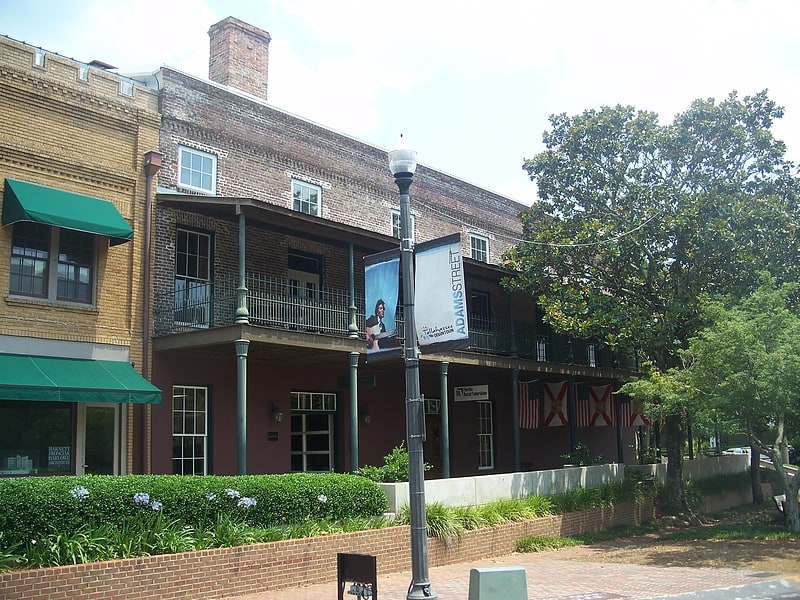
Theater in Tallahassee, Florida. The Gallie's Hall and Buildings is a historic site in Tallahassee, Florida. It is located off State Road 61, and held the city's first theater and only public hall until 1910. On October 20, 1980, it was added to the U.S. National Register of Historic Places.[15]
Address: 209 S Adams St, 32301-1720 Tallahassee
Carnegie Library at FAMU
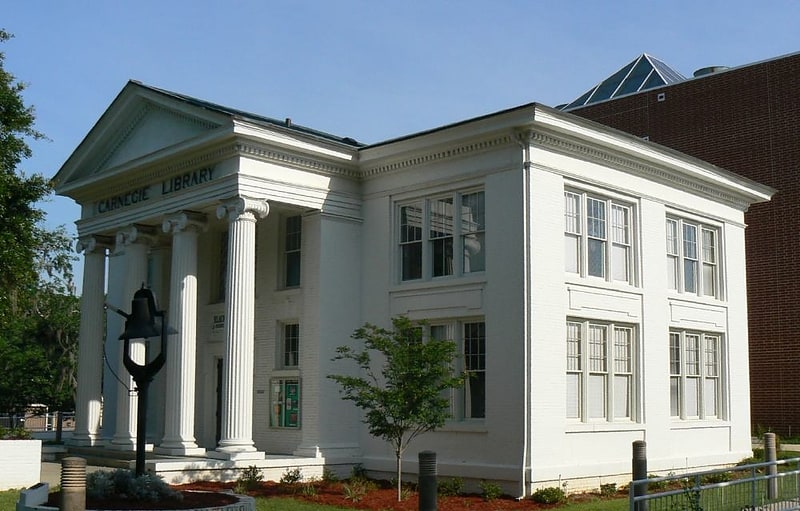
Archive in Tallahassee, Florida. The Carnegie Library at FAMU is a historic building on the campus of Florida A&M University in Tallahassee, Florida. Built in 1908, the two-story, white-columned building was added to the National Register of Historic Places in 1996. "It was part of a national building program by philanthropist Andrew Carnegie." The Black Archives was established by the Florida Legislature in 1971 and opened in 1975. It was one of many public and college libraries funded by Andrew Carnegie, which were named Carnegie Library after him. It is the oldest brick building on the campus and the first Carnegie Library to be built on a black land-grant college campus.
Carnegie's library was built at what is today FAMU because the city of Tallahassee refused it, since under Carnegie's rules it would have had to serve black patrons (see History of Tallahassee, Florida#Black history). At the time, FAMU's predecessor, the State Normal and Industrial College for Colored Students, was in need of a new library. Its library had been located in the mansion of Florida Governor William Pope Duval, which burned in 1905. The Carnegie Library was built on the site of that mansion.
It was designed by architect William Augustus Edwards and was built in 1908. On November 17, 1978, it was added to the U.S. National Register of Historic Places.[16]
Address: 1500 S Martin Luther King Jr Blvd, Tallahassee (Capital Cascade)
Lichgate on High Road
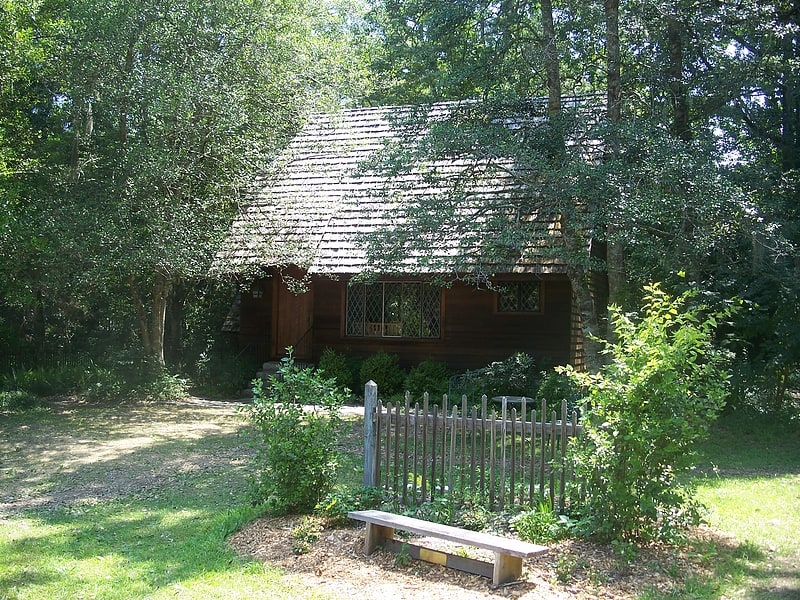
Historical landmark in Tallahassee, Florida. The Lichgate on High Road is a site in Tallahassee, Florida. It is located at 1401 High Road. On March 31, 2006, it was added to the U.S. National Register of Historic Places.[17]
Address: 1401 High Rd, 32304-1824 Tallahassee
First Presbyterian Church

Church in Tallahassee, Florida. First Presbyterian Church is an historic church in Tallahassee, Florida. It is located at 102 North Adams Street. The congregation was first organized on November 4, 1832, and the church building was built between 1835 and 1838, which makes it the oldest church in Tallahassee and the oldest building in Florida that's still being used for its original purpose.
The building was designed to serve as a sanctuary for women and children during American Indian attacks. Rifle slots are built into the foundation but are not visible from outside. On September 9, 1974, it was added to the U.S. National Register of Historic Places.
Today, there are still services every Sunday at 10:45. There are estimated to be several hundred members of the congregation, with average attendance of just over two hundred persons. The congregation is part of the Presbyterian Church (USA), and is known for having and maintaining a progressive theological and social perspective through the years. Since 2008, First Presbyterian Church has been affiliated with The Covenant Network of Presbyterians, and supports the ordination of all qualified persons into both lay and ordained ministry, regardless of sexual orientation. For the past several years, First Presbyterian Church has been a sponsor of Pridefest. In 2009, the "Light from Light" campaign was born. As a part of this program, solar panels were added to the building, making First Presbyterian one of only a few churches nationwide to generate a portion of its own electricity. As of 2010, First Presbyterian Church was home to the second largest solar panel array in Leon County.[18]
Address: 110 North Adams Street, Tallahassee
St. John's Episcopal Church
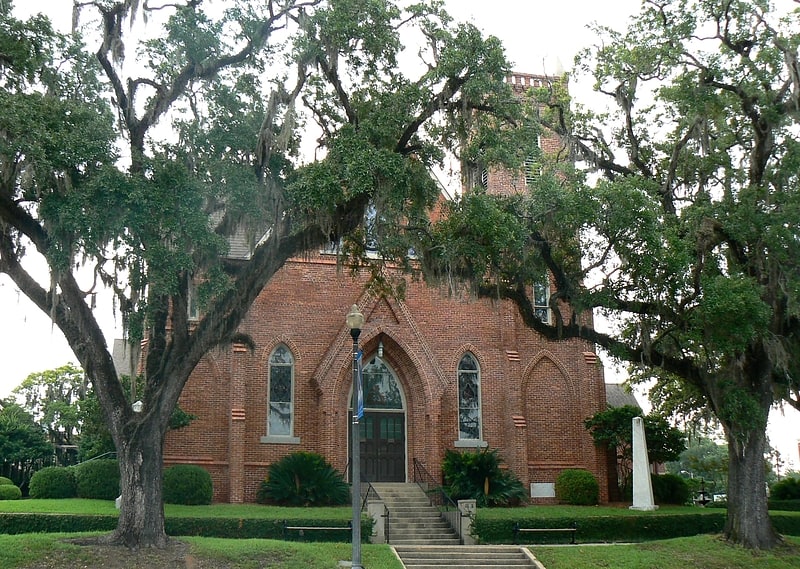
Church in Tallahassee, Florida. St. John's Episcopal Church is an historic church in Tallahassee, Florida. It is located at 211 North Monroe Street. On August 10, 1978, it was added to the U.S. National Register of Historic Places.
The church body was first constituted in 1829. Services were held in the old Leon County court house on Monroe Street from 1829 to 1837. From 1837 to 1879 services were held in first church building at the same site. This building was consecrated in 1838, but eventually burned down in 1879. Services resumed in the court house, which also eventually burned down, and then in the capitol building, during the erection of present Gothic style, red brick church, erected in 1880 and dedicated in 1888. This building still stands, with art glass and memorial glass windows, pipe organ, bronze memorial tablet, altar service, bronze memorial tablet, altar service, carved lectern, prie-dieu, carillon. The church owns its rectory.[19]
Address: 200-298 N Calhoun St, 32301 Tallahassee (Capital Cascade)
Alfred B. Maclay Gardens State Park
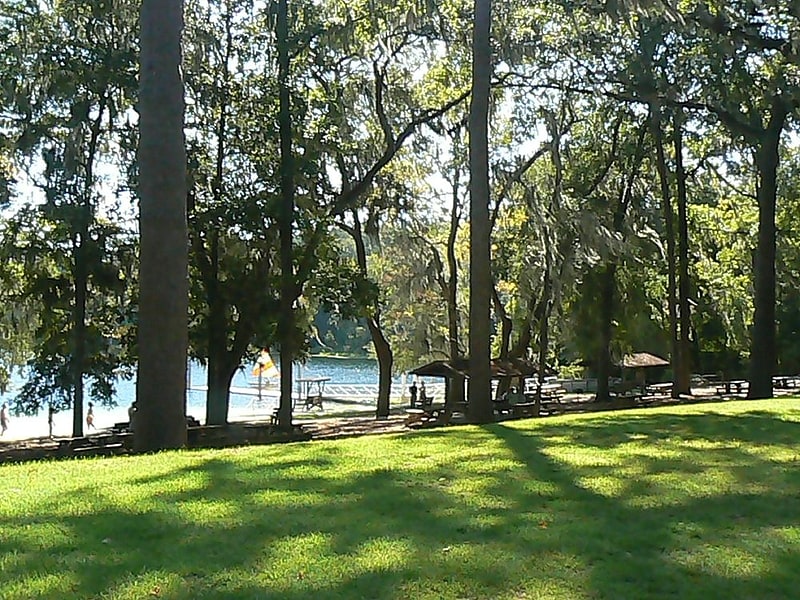
State park in Leon County, Florida. The Alfred B. Maclay State Gardens is a 1,176-acre Florida State Park, botanical garden and historic site, located in Tallahassee, in northeastern Florida. The address is 3540 Thomasville Road.
The gardens are also a U.S. historic district known as the Killearn Plantation Archeological and Historic District. It received that designation on August 16, 2002. According to the National Register of Historic Places, it contains 18 historic buildings, 4 structures and 4 objects.[20]